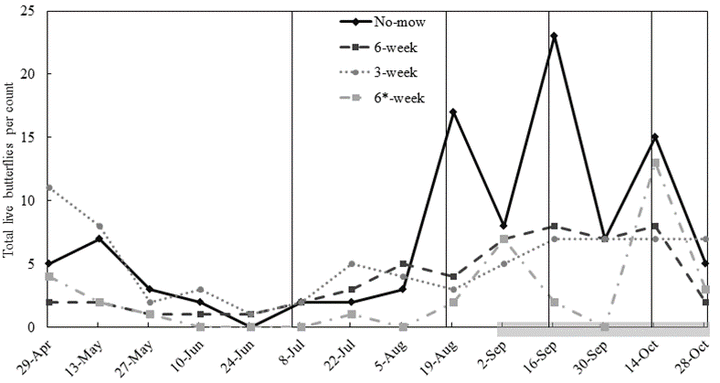Reducing Mowing Frequency Increases Floral Resource and Butterfly (Lepidoptera: Hesperioidea and Papilionoidea) Abundance in Managed Roadside Margins

Abstract
Roads are common in natural landscapes and can have significant impacts on wildlife. Most studies have focused on vertebrates and primarily addressed the negative impacts of roads. However, roadside margins have the potential to support habitat for some taxa, such as pollinating insects. The purpose of this study was to determine whether changes in roadside vegetation management affect butterflies (Lepidoptera: Hesperioidea and Papilionoidea) and floral resources. Specifically, we investigated how mowing frequency affects both the abundance and mortality of butterflies and the abundance and species richness of herbaceous plants in bloom along highway margins. Three different mowing treatments were applied to sections of highway margin in Florida, USA: no mowing, mowing every 6 wk, and mowing every 3 wk. Butterfly and floral resource data were gathered at regular intervals for 6 mo during the peak growing season, from late spring through early fall. Correlations between floral species richness and abundance and butterfly abundance were calculated. The mowing treatment had a significant effect on floral resources, with the 3 wk treatment yielding the lowest abundance and species richness. The mowing treatment alone did not have a significant effect on any butterfly variable, but the mowing treatment*time interaction had a significant effect on live butterfly abundance. The no-mow treatment yielded the greatest numbers of live butterflies from late summer into early fall. This study suggests that reducing mowing during peak seasonal butterfly activity can increase butterfly numbers. Future studies in different regions would benefit from considering the effects of time of year of mowing in addition to the frequency.